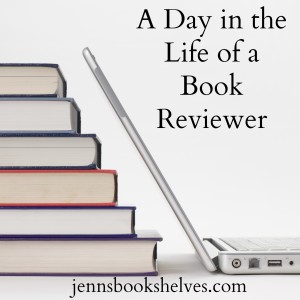Yesterday, I posted my review of Naseem Rakha’s The Crying Tree. Today I’m excited to present you with an interview with Naseem :
Irene Stanley goes through a tremendous cycle of pain and grief in The Crying Tree. You were able to capture these emotions so perfectly. What sort of research did you do in writing this book that allowed you to capture this pain so accurately?
It would probably be a good to say I did a great deal of research into the emotional world one enters when they lose a child, but that would not be true. My exposure to the topics in The Crying Tree, were minimal. I did cover an execution as a reporter and I have interviewed many inmates, prison officers, and staff for a variety of stories. I have also talked with crime victims about their experiences. But the real energy behind my characters’ emotions came from plumbing my own imagination and the terror, hate, pain and upheaval I know I would feel if I were to lose someone I loved to a violent crime. My goal was to create authentic characters with struggles that felt both tangible and believable, and for me, it was best that the research came from my own soul’s voice, versus others.
The Crying Tree was quite the emotional roller coaster of a book, very difficult for me to read at times. How difficult was it for you to write?
Some people are afraid of roller coasters, I find them exhilarating. I was driven to write The Crying Tree – like a locomotive without breaks. Nothing could stop me. I would wake every morning filled with ideas and inspiration. I had no idea what “writer’s block,” meant. Even in times when I felt utterly confused and baffled, I had to write. Yes, The Crying Tree has some difficult moments, but I worked hard to make sure this book was not a melodrama. I wanted to create something life giving. Odd to say for a book about murder and the death penalty, I know. But I always knew what I was aiming for and that target was to create a book that would make people want to turn around and find someone to share it with. That is what I felt like with every chapter I completed, and that is what I have heard from many readers.
The song Silent Night plays a pretty big role in the book. Does it have a particular meaning to you personally?
The character of Shep, the young boy who is murdered in my novel, is a gifted musician who plays silent night every night of the year. “It is his closing piece to the end of the day, and he would either play it outside on his horn when the weather was good, or inside on the piano.” It is a famous piece, known throughout the world, and it resonates, stirring deep emotions and memories for most listeners. This was important.
As you point out, Silent Night almost becomes a theme in my novel. Silence is one of the underlying tensions in The Crying Tree – the silence between family members, the secrets they hold and what they do to the people that hold them. And of course another theme is that of the relationship between “mother and child.” The song Silent Night, brings both of these themes into the folds of the book, while triggering personal emotional connections for most readers.
The characters in The Crying Tree are all very complex with their own share of flaws. Did you have inspiration for any of the characters or did they just create themselves as you wrote?
I don’t think it is accurate to say characters create themselves, though I know that is how it is often described. Instead, I think creating characters takes hard work and persistence. It takes both halves of the brain, the right-side must bundle unlikely characteristics together, while the left side must be the objective observer, editing and managing character traits like an artistic director. My characters grew from those two halves of my brain doing twenty-four hour a day duty. If I was not actively writing about my characters, I was thinking about them, testing them, putting them in different scenarios, seeing how they reacted, and checking out their past. If I was not actively thinking about them, I was passively ruminating – day dreams in the shower, while driving, or making dinner. The characters in The Crying Tree were a product of trial and error and occasional hits of brilliance – those moments when the things that come out of the pen are not at all what you expect – but never-the-less ring true. It is from those moments, I think, that people say their characters “create themselves.” But they don’t really. They are the writer’s children, born of our own sweet, and sometimes not so sweet dreams.
The book deals with a number of sensitive/controversial subjects. Have you received any backlash/negative feedback based on the actions/opinions of some of the characters?
Nothing significant.
Music was an important element of the book. Is music important to you, to your writing process? If so, what sort of music do you listen to as you write?
Music has always been important to me. It flows into my subconscious creating an emotional ambiance from which I can pull images and actions and words. I always write to music. Right now I am listening to Time Without Consequences by Alexi Murdoch. The weather outside is gray, the trees bare, the music sparse. The setting, the music, the time of day, the season, they all make me feel emotionally vulnerable, and it is from that point that I most like to write. In writing The Crying Tree, I created a specific playlist of about 60 songs – ranging from Bach to Rosanne Cash. I have a partial list of them on my website at http://naseemrakha.com/pages/links.html
While this is your first novel, you have an extensive history in broadcast journalism. How was writing The Crying Tree different?
The biggest difference between being a journalist and an author is the amount of faith it takes to write a work of fiction. Unlike journalism, where the characters come already created, and the beginning, middle and end of a story is all laid out somewhere for you to find – the art of fiction requires the writer to develop all this on their own. This was a challenge for me. The uncertainty of what would happen next, how my characters would get from point A to B, how the plot would move forward through time — all this and so much more were very perplexing questions that could only be answered in one way. By writing. Every day, I had to sit down with my doubts and continue to write though them. I like to point out that to get a book of about 103,000 words I had to write about 150,000 words. The unseen scenes were created for me to better understand my characters. Writing fiction, I learned, is to walk in an unknown land, with no map and no idea what lays around the next bend. It takes faith. Journalism takes drive, focus, fast fingers, and the ability to track down the people who will later become characters of your story. Both, I might add, require good editors.
What’s next for you? Do you have any other novels in process?
I am working on my second novel. It is about the complexities of love and loss.
Tell me about your writing process. Do you have any rituals, i.e. time of day you write, certain tools you use to write?
I write whenever and whereever I can. I tend to write on my computer, as I can get in more words per minute. I use an Apple lap top and I bring it wherever I go (including Yoga class – which upsets some. “That’s not very yoga-like,” I have been told as I type before class starts.) I do like to get up early to write. I try not to write at night, as it is very hard for me to get to sleep if I get my characters all stirred up. I also like to write in coffee shops. Or wine bars. Or train stations. Or parks. Places I can be around people without having to be with people…. I try to leave my writing when I still have ideas in my mind. This creates momentum for when I return to the page.
I love to see where the magic takes place. Do you have a favorite reading/writing spot?
Here is a photo of my kitchen writing area. A place I tend to migrate to early in the morning. The painting in the corner was done for me by local artist Ann Altman. It is on my web site. On it is my motto: “I think therefore I read. I read therefore I think.”
Thank you, Naseem!
I have a copy of The Crying Tree to give away to one lucky individual. To enter, please fill out the form below. Open to US & Canadian residents only, please. Winner will be contacted on Friday, February 4.






Pingback: Tweets that mention Interview & Giveaway: Naseem Rakha, Author of The Crying Tree | Jenn's Bookshelves -- Topsy.com